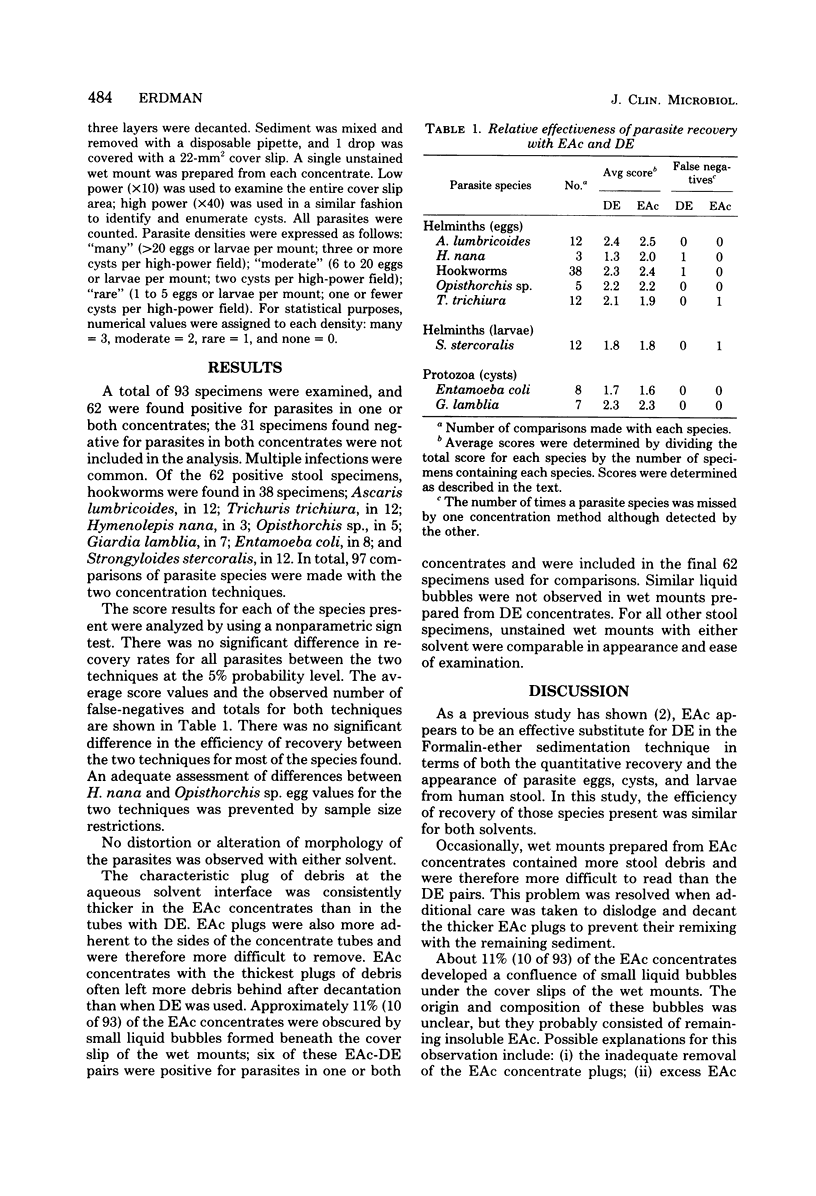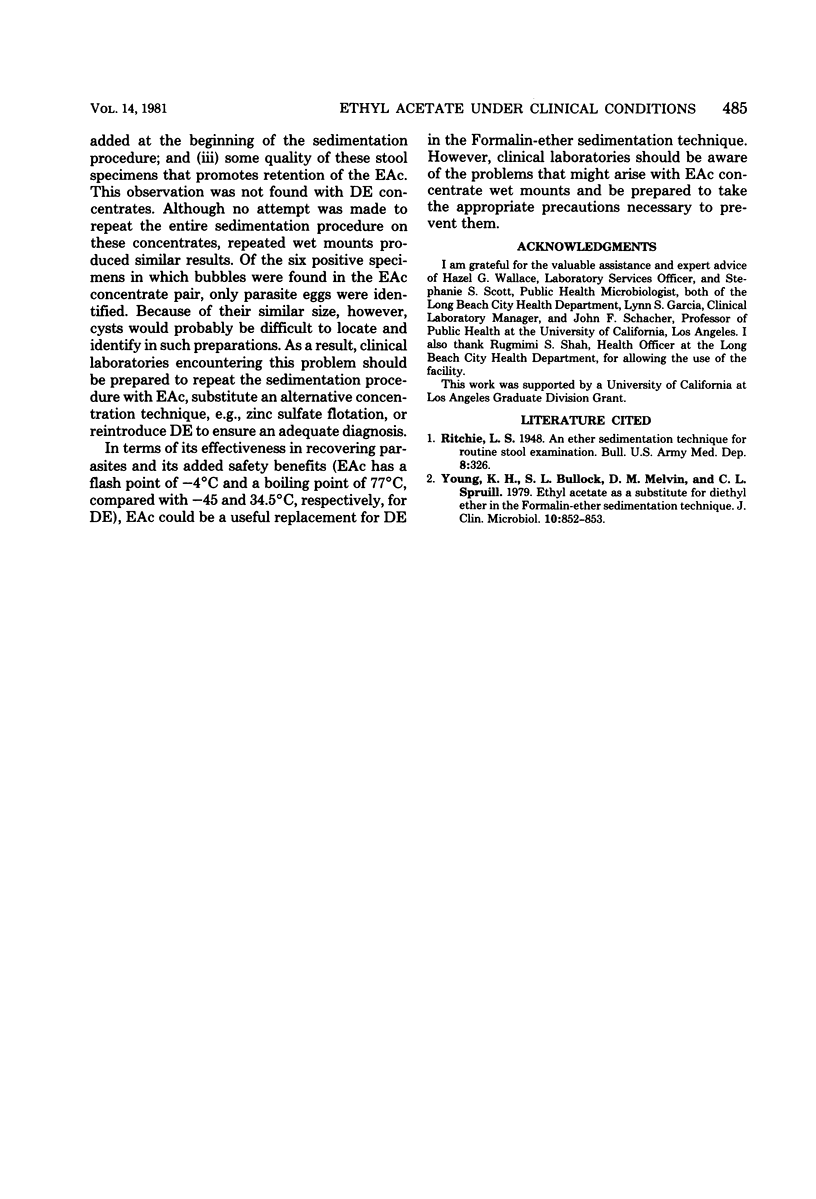Abstract
A substitute for the volatile solvent diethyl ether has been actively sought for the Formalin-ether sedimentation technique. Ethyl acetate has recently been shown to be a comparable substitute. In an effort to verify these findings and evaluate ethyl acetate under clinical conditions, comparison studies with 62 fresh human stool specimens were performed. Parallel concentrates with diethyl ether and ethyl acetate were prepared for each specimen, and the quantity and appearance of recovered parasite species were determined. Ethyl acetate was found comparable to diethyl ether in the quantitative recovery of parasite eggs, cysts, and larvae; no distortion or alteration of parasite morphology was observed with either solvent. More care was required, however, to completely remove the interface plugs of ethyl acetate and prevent their remixing the concentrate sediment. In addition, wet mounts prepared from ethyl acetate concentrates were occasionally obscured by liquid bubbles probably composed of remaining insoluble ethyl acetate. Clinical laboratories considering substituting ethyl acetate for diethyl ether in the Formalin-ether sedimentation technique should be aware of these problems and take the appropriate precautions to avoid them.
Full text
PDF


Selected References
These references are in PubMed. This may not be the complete list of references from this article.
- Young K. H., Bullock S. L., Melvin D. M., Spruill C. L. Ethyl acetate as a substitute for diethyl ether in the formalin-ether sedimentation technique. J Clin Microbiol. 1979 Dec;10(6):852–853. doi: 10.1128/jcm.10.6.852-853.1979. [DOI] [PMC free article] [PubMed] [Google Scholar]


